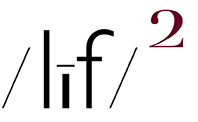(embiggenable)
(embiggenable)
(embiggenable)
But something is happening and you don't know what it is…Do you, Mr. Jones? ~ Bob Dylan
RE: WHAT I BELIEVE MAKES A PHOTOGRAPH INTERESTING.
It illustrates the real world, as much as the medium allows, in an accurate and truthful manner. AKA: straight photography.
It shows me something that I do not already know. Hint: Amongst many things, I already know that kittens and puppies are cute and that the natural world, when bathed in ‘glorious’ light, is pretty.
It shows me that “something” in manner that disregards the “rules for good photography”. But, no gimmicks. Just honest personal vision.
And, it also shows me an intangible “something” that is more than / beyond the literally depicted referent.
It is a delight for the visual senses.
Re: #5 : what delights my eye and sensibilities is a visual quality / characteristic that I call visual energy. A quality that defies the traditional picture making wisdom to simplify (see #3). To the contrary, I want my photographs to function like a pool table / pinball machine inasmuch as I have no desire to give a viewer’s eye a place to land and relax on the 2D surface of my prints. Rather, I want to direct a viewer’s eye to careen around the surface of my prints, ricocheting off the hard-defined edges of the image, all the while chasing / tracing lines, colors, and shapes. Think of it as dancing, if you will. albeit more like Hip Hop than a Waltz.
iMo and viewing experience, not only is the “dance” visually interesting, a photograph with visual energy encourages repeated viewing inasmuch as the “dance” will most likely be different with each successive viewing. And, in keeping with the dance metaphor, one could write that a photograph with visual energy has “legs”.
FYI, visual energy is a visual characteristic / quality that I look for, in one more-or-less degree, in the photographs made by others.
